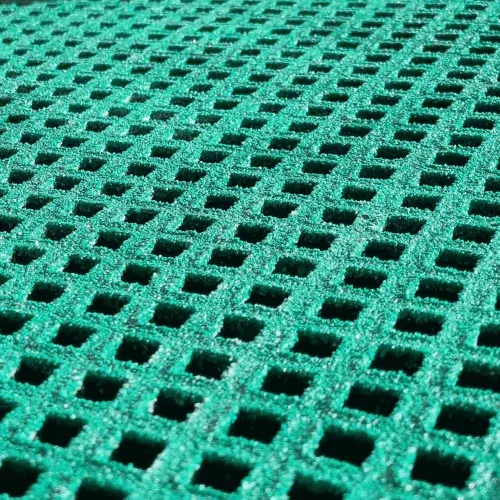loading...
- No. 9, Xingyuan South Street, Dongwaihuan Road, Zaoqiang County, Hengshui, Hebei, China
- admin@zjcomposites.com
- +86 15097380338
- Welcome to visit our website!
Effective Methods for Treating Well Water Contaminants and Ensuring Safe Drinking Water
Water Treatment for Well Water Ensuring Safe and Clean Water Supply
Water is a vital resource for human life, and access to clean and safe drinking water is essential for health and well-being. For many households, especially those in rural areas, well water is a primary source of water. However, unlike municipal water supplies, well water is not treated or regulated by governmental authorities, making it crucial for well owners to ensure that their water is safe for consumption. Water treatment for well water involves several processes that help eliminate contaminants and improve water quality.
Understanding Well Water Contamination
Well water can become contaminated due to a variety of factors. These include natural occurrences, such as geological formations that leach minerals and chemicals into the groundwater, as well as human-induced sources like agricultural runoff, septic system leakage, and improper waste disposal. Common contaminants found in well water include bacteria (like E. coli), nitrates, heavy metals (like lead and arsenic), pesticides, and sediments. Regular testing is essential to identify these potential pollutants, as many are odorless and colorless, and can pose serious health risks.
The Importance of Testing
Before implementing any treatment, it is crucial to have the well water tested. Homeowners should conduct a comprehensive water test at least once a year. This testing typically screens for bacteria, nitrates, pH levels, hardness, and specific contaminants depending on local risks. Many laboratories offer water testing kits, and local health departments can also assist in recommending reliable testing services. If elevated levels of toxins or bacteria are detected, prompt action is necessary to treat the water.
Water Treatment Methods
Once testing has been completed and contaminants identified, various water treatment methods may be employed to ensure the safety of the water supply. Here are some common treatment options
1. Filtration Water filters can remove particles, sediments, and some chemical contaminants from well water. Different filter types, such as activated carbon filters and reverse osmosis systems, can effectively reduce specific pollutants. It is essential to select a filter that targets the contaminants present in the water.
water treatment for well water

2. Disinfection To eliminate harmful bacteria and viruses, disinfection methods such as chlorination, ultraviolet (UV) light treatment, or ozonation can be used. Chlorination is one of the most common methods; however, it requires careful monitoring and maintenance. UV disinfection, on the other hand, is chemical-free and effective against bacteria and Viruses.
3. Ion Exchange This method is particularly useful for addressing hardness and removing specific metals such as lead or arsenic. Ion exchange units swap undesirable ions in the water with harmless ones, thereby purifying the water.
4. Reverse Osmosis (RO) A highly effective filtration method, RO systems force water through a semipermeable membrane that removes a majority of contaminants, including organic compounds, heavy metals, and certain bacteria. This process typically requires a storage tank and may necessitate periodic maintenance.
5. Water Softening If the well water contains high levels of calcium and magnesium, a water softener can be installed. Softening water makes it easier to clean and can extend the lifespan of plumbing systems and appliances.
Maintenance and Regular Monitoring
Successful treatment and safe usage of well water do not end with installation. Regular maintenance of treatment systems is crucial to ensure their efficacy. Homeowners should replace filters according to the manufacturer’s recommendations and routinely check for any signs of malfunction or reduced performance. Additionally, continual water testing is essential even after treatment to ensure that no new contaminants have entered the water supply.
Conclusion
In conclusion, the safety and quality of well water are paramount for any household relying on it as a primary water source. By understanding potential contaminants, conducting regular testing, and implementing appropriate treatment methods, well owners can ensure that their water is safe for drinking and other uses. The investment in water treatment not only protects health but also contributes to overall peace of mind, knowing that one's family has access to clean water.
-
The Rise of FRP Profiles: Strong, Lightweight, and Built to LastNewsJul.14,2025
-
SMC Panel Tanks: A Modern Water Storage Solution for All EnvironmentsNewsJul.14,2025
-
GRP Grating: A Modern Solution for Safe and Durable Access SystemsNewsJul.14,2025
-
Galvanized Steel Water Tanks: Durable, Reliable, and Ready for UseNewsJul.14,2025
-
FRP Mini Mesh Grating: The Safer, Smarter Flooring SolutionNewsJul.14,2025
-
Exploring FRP Vessels: Durable Solutions for Modern Fluid HandlingNewsJul.14,2025
-
GRP Structures: The Future of Lightweight, High-Performance EngineeringNewsJun.20,2025
